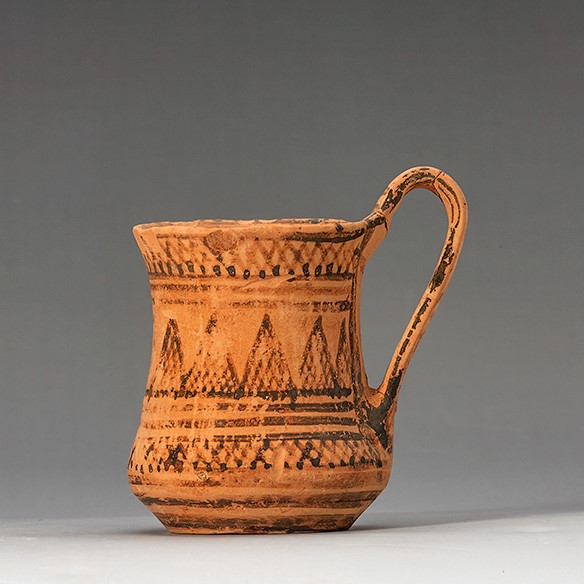
Artefact or object:
Description:
Attic Geometric Pottery
Introduction by J.R. Green
The term is derived from the manner in which the pottery is decorated, that is with abstract geometric motifs. The decoration is not haphazard but organised carefully into zones which correspond to and emphasise the structure of the vase. This emphasis on structural organisation in relation to the shape of the vase is quite different from the more intuitive approach of much Minoan and Mycenaean vase-painting, but it was one which was never entirely lost in later Greek work.
The style arose about 900 bc and continued until near the end of the eighth century. Both our examples belong to the Late Geometric period (ca 760-710 bc in Athens), by which stage the greater part of the vase is covered with decoration and the area of black reduced to the lowermost part, towards the base.
For a good overall survey and analysis, see J.N. Coldstream, Greek Geometric Pottery (London 1968, second ed. 2008) which also includes an extensive bibliography.